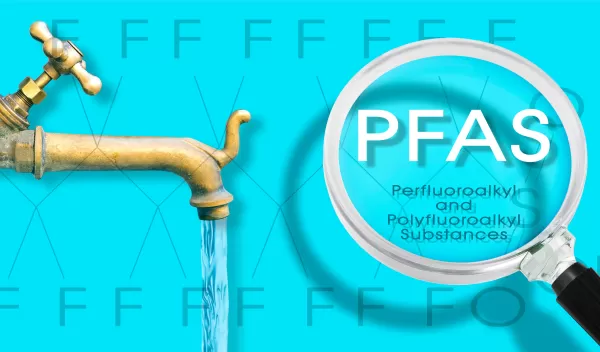
Advanced electrode to help remediate stubborn new 'forever chemicals'
As new environmental regulations are rolling out to mitigate the industry-retired long-chain chemicals known as PFAS in drinking water, there are concerns regarding a new breed of these "forever chemicals" called short-chain PFAS. PFAS is an abbreviation for perfluoroalkyl and polyfluoroalkyl substances.
Researchers at the University of Illinois Urbana-Champaign are helping shift the focus to include mitigation of the chemicals, which the investigators say are just as persistent as their long-chain counterparts, more mobile and harder to remove from the environment.
A study directed by chemical and biomolecular engineer Xiao Su uses electrosorption rather than filters and solvents and combines synthesis, separations testing and computer simulations to help design an electrode that can attract and capture a range of short-chain PFAS from environmental waters.
The research was supported in part by the U.S. National Science Foundation through a research grant and the National Center for Supercomputing at Illinois, one of five facilities created by NSF's Supercomputer Centers Program.
A paper published in the Journal of the American Chemical Society describes how Su and team designed and synthesized a new class of copolymers that were used to prepare electrodes to selectively extract short-chain PFAS from aqueous solutions and contaminated wastewater via electrosorption. The authors showed that the bound PFAS contaminants could be released from the electrodes by applying an electric potential to achieve "nearly 100%" regeneration, which eliminates the need for the use of chemicals to regenerate the new PFAS selective electrodes.
"One of the challenges of working with short-chain PFAS is that they are not well studied,” Su said. “We know that they contain fewer carbon and fluorine atoms, making them shorter molecules and, therefore, more mobile, or freer to interact within the natural environment. They are more hydrophilic, meaning they are more apt to bond with water molecules. These properties combined make them more difficult to separate from water than their long-chained counterparts."
The differences among short- and long-chain PFAS — and between long-chain PFAS in general — are significant enough for the team to rethink its previously developed electrode designed to attract, capture and destroy long-chain PFAS from the environment and drinking water sources.
"The lengths of short-chain PFAS molecules vary, giving them different physical properties," Su said. "This means we need to be able to tune the electrode just right to attract and eventually release the short-chain PFAS, with molecular-level understanding of the interactions being key to success."
Su said the work is a critical early step in removing short-chain PFAS from the environment, which have replaced long-chain PFAS in many industries.
